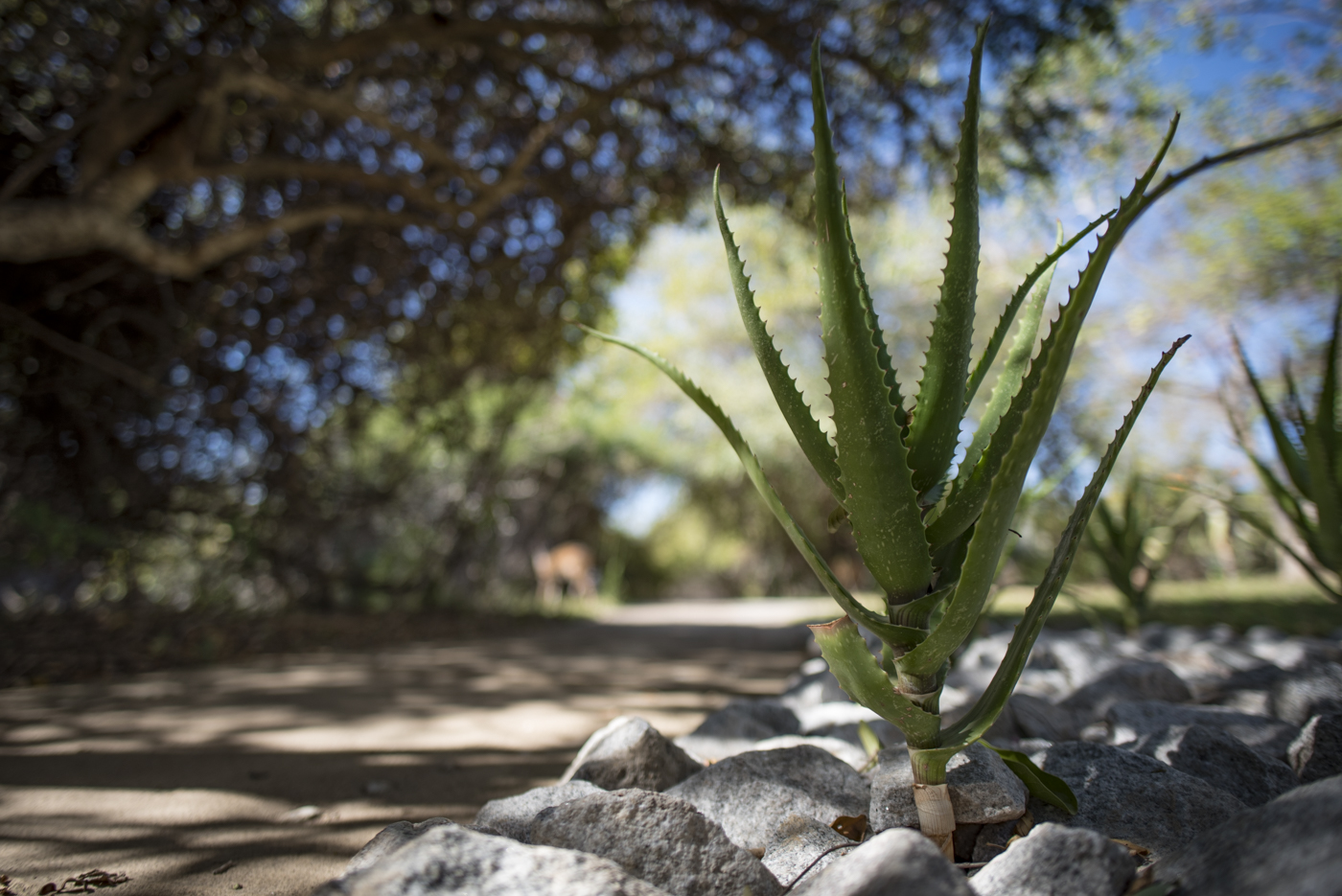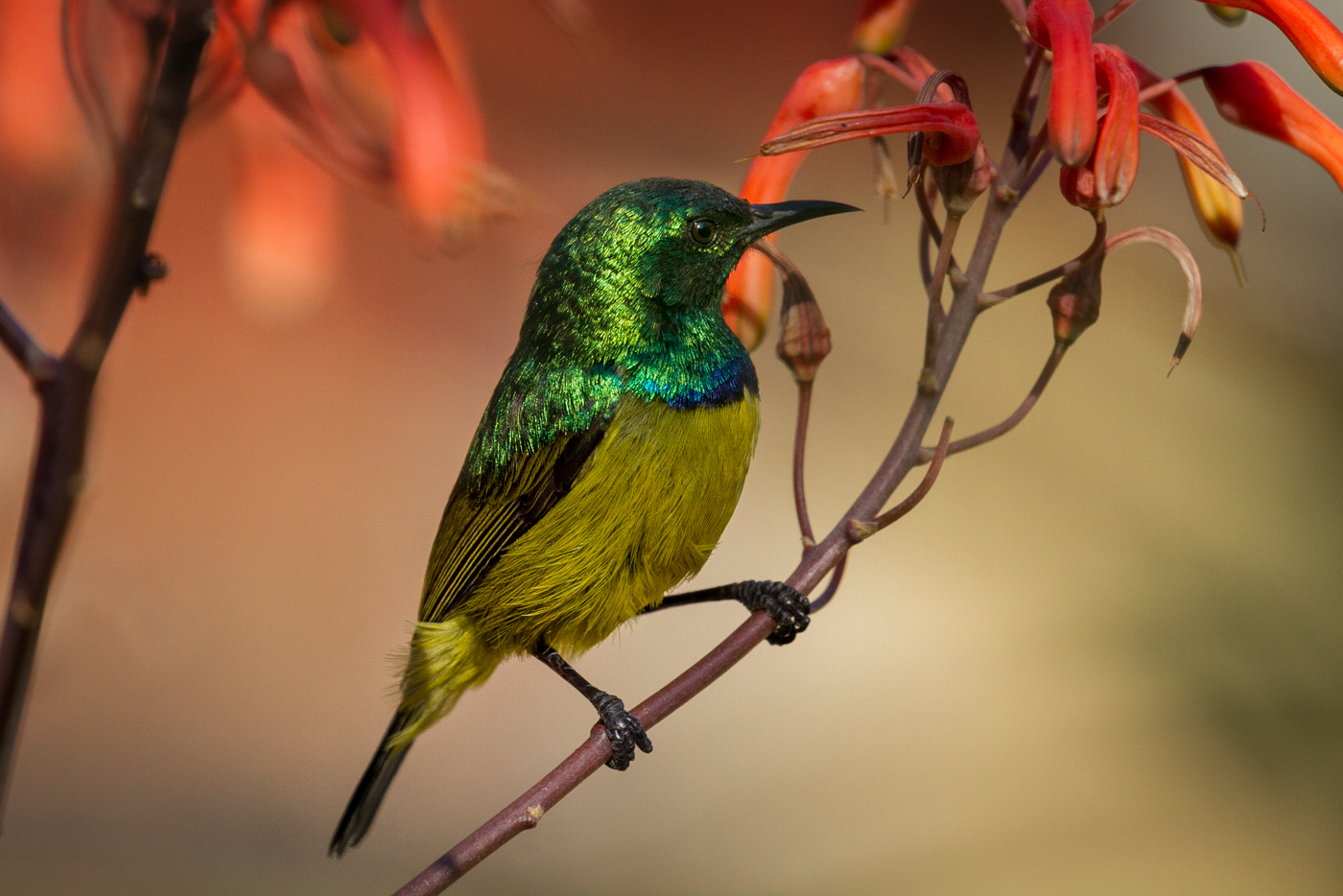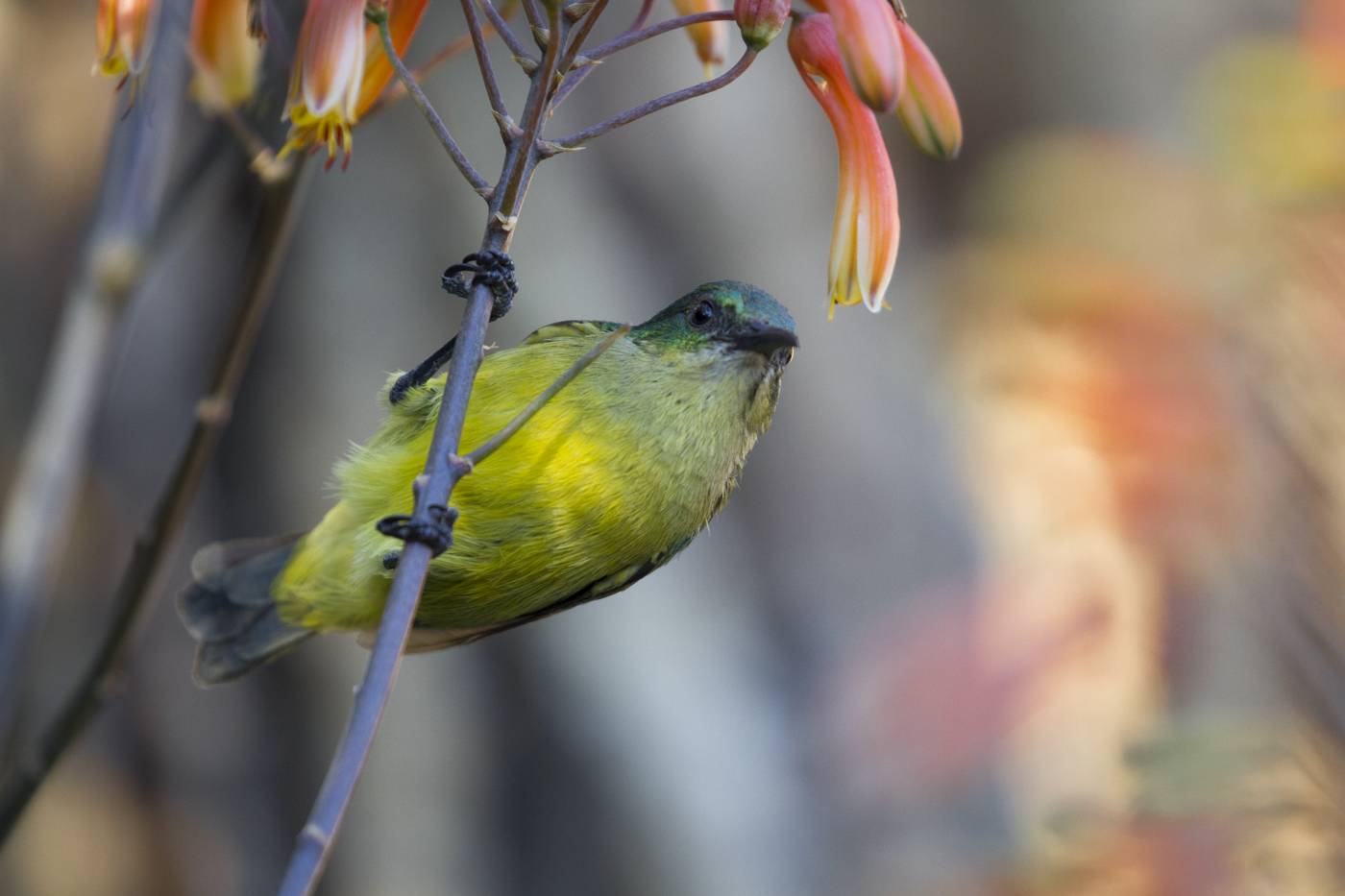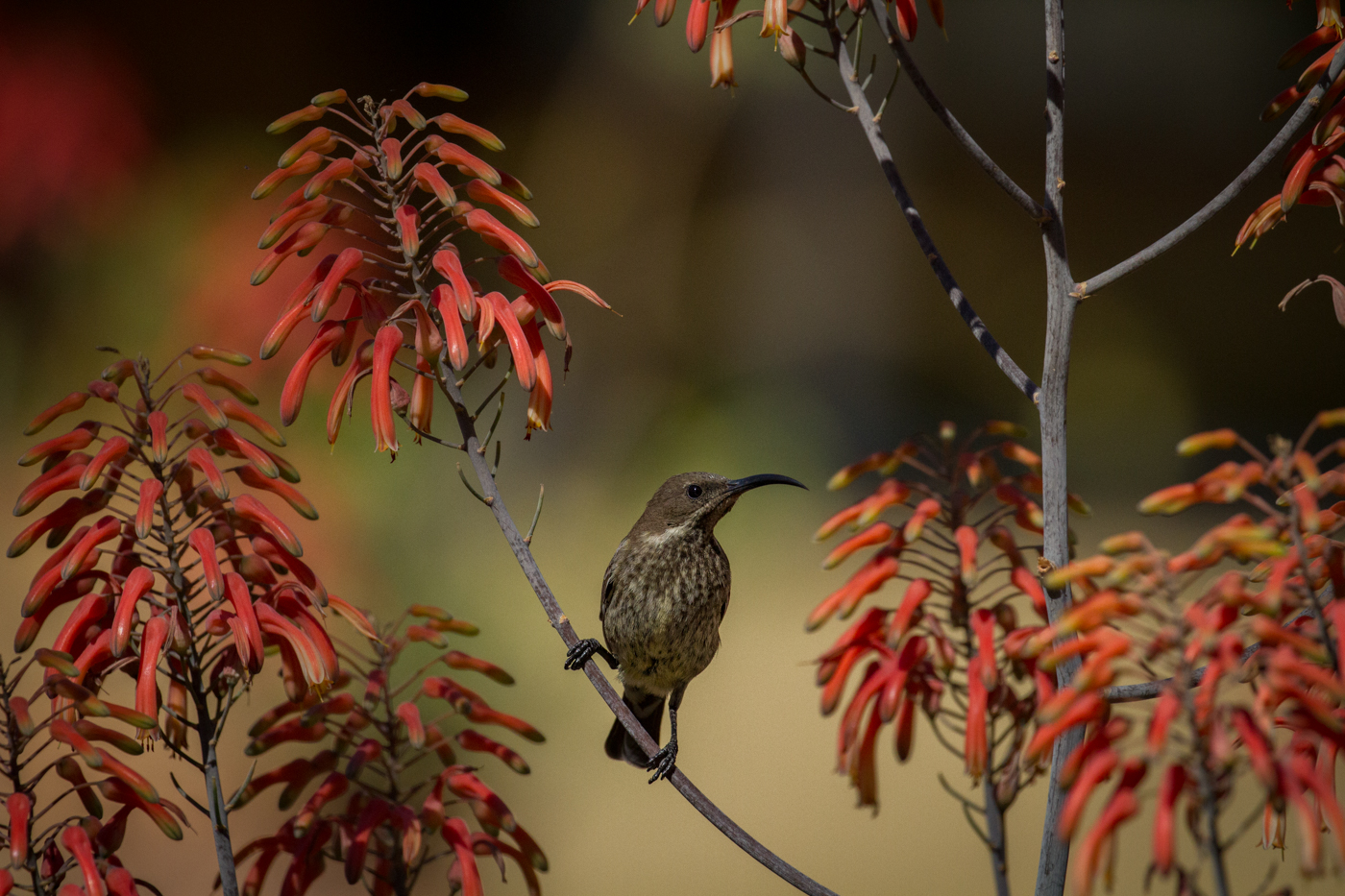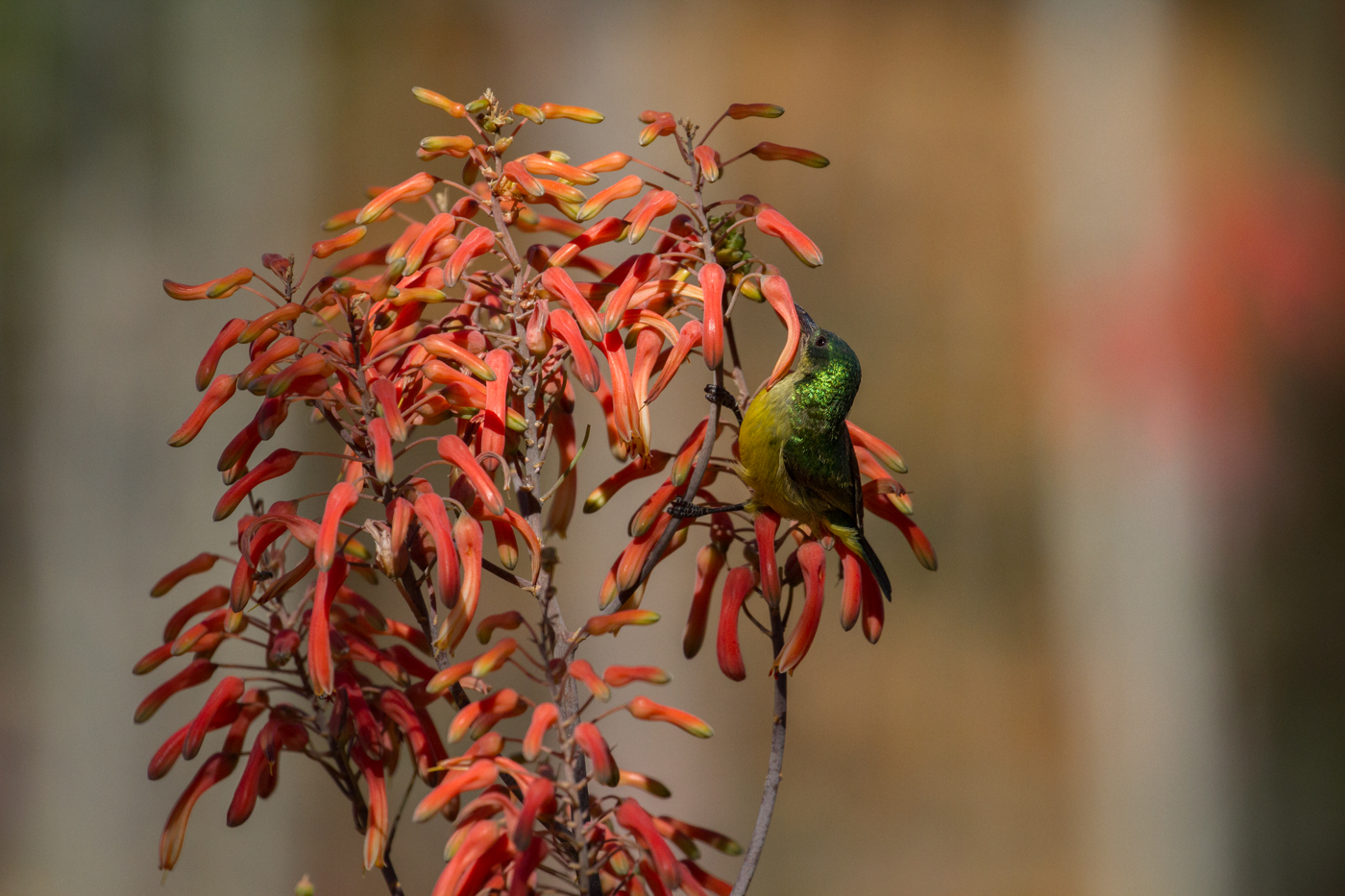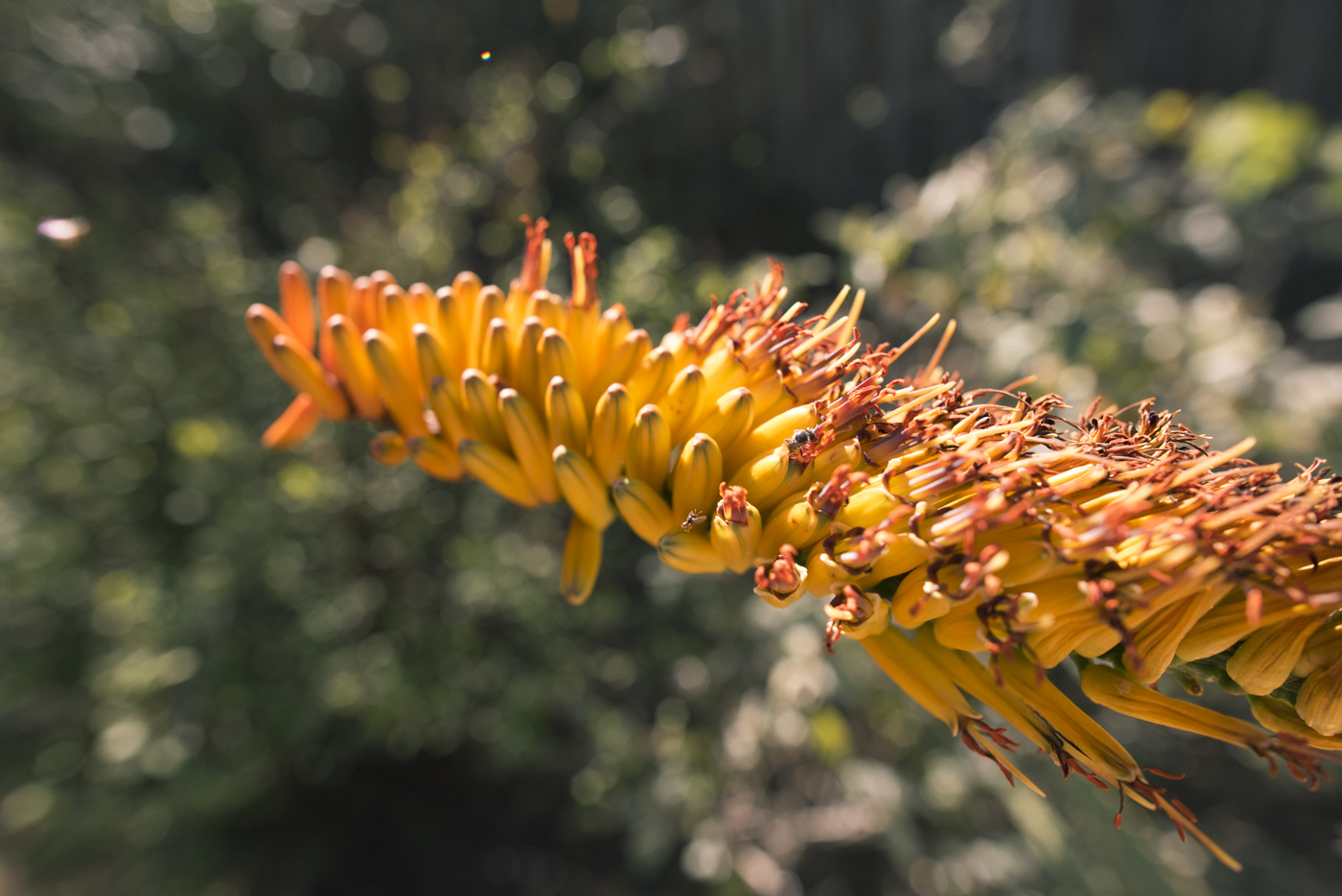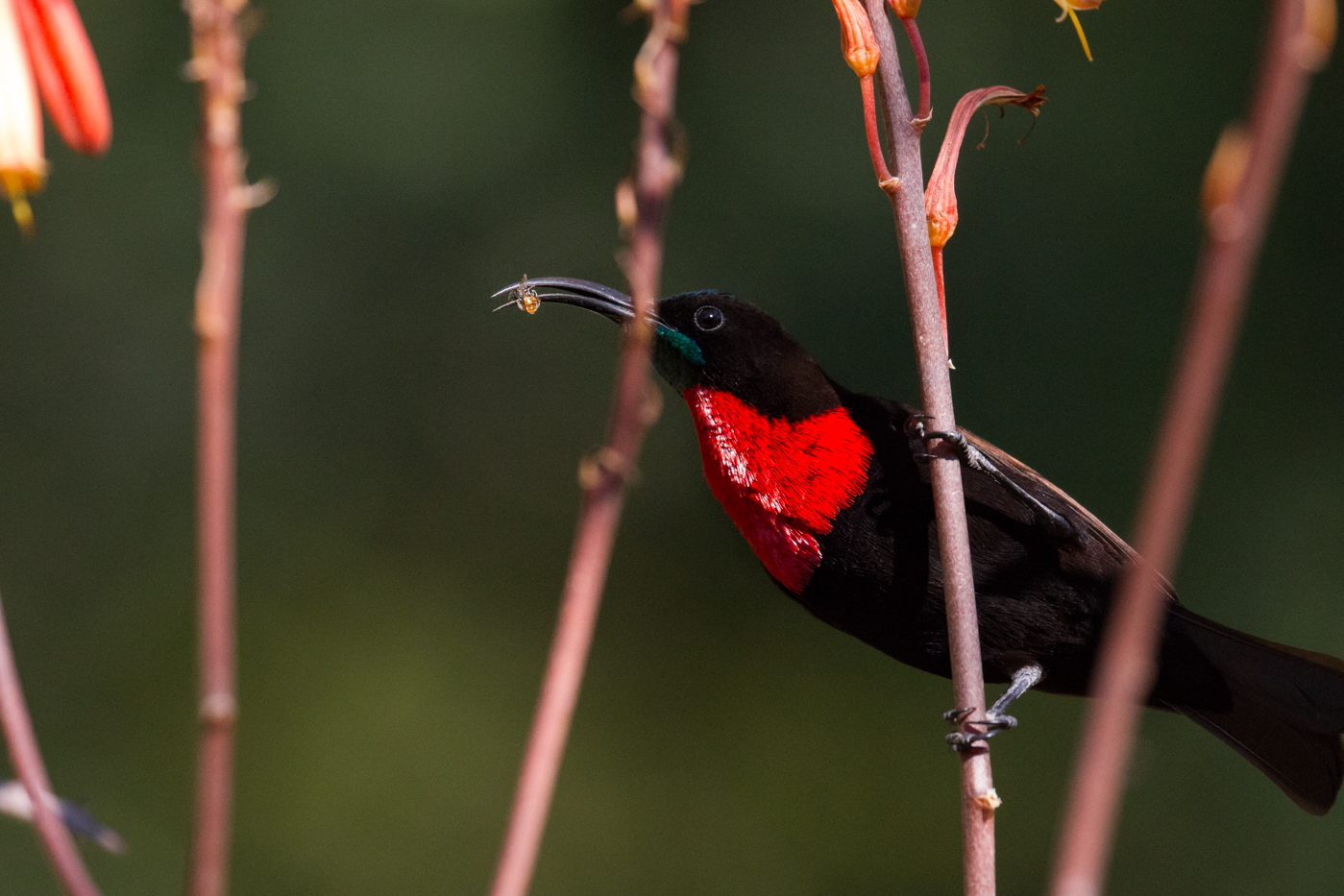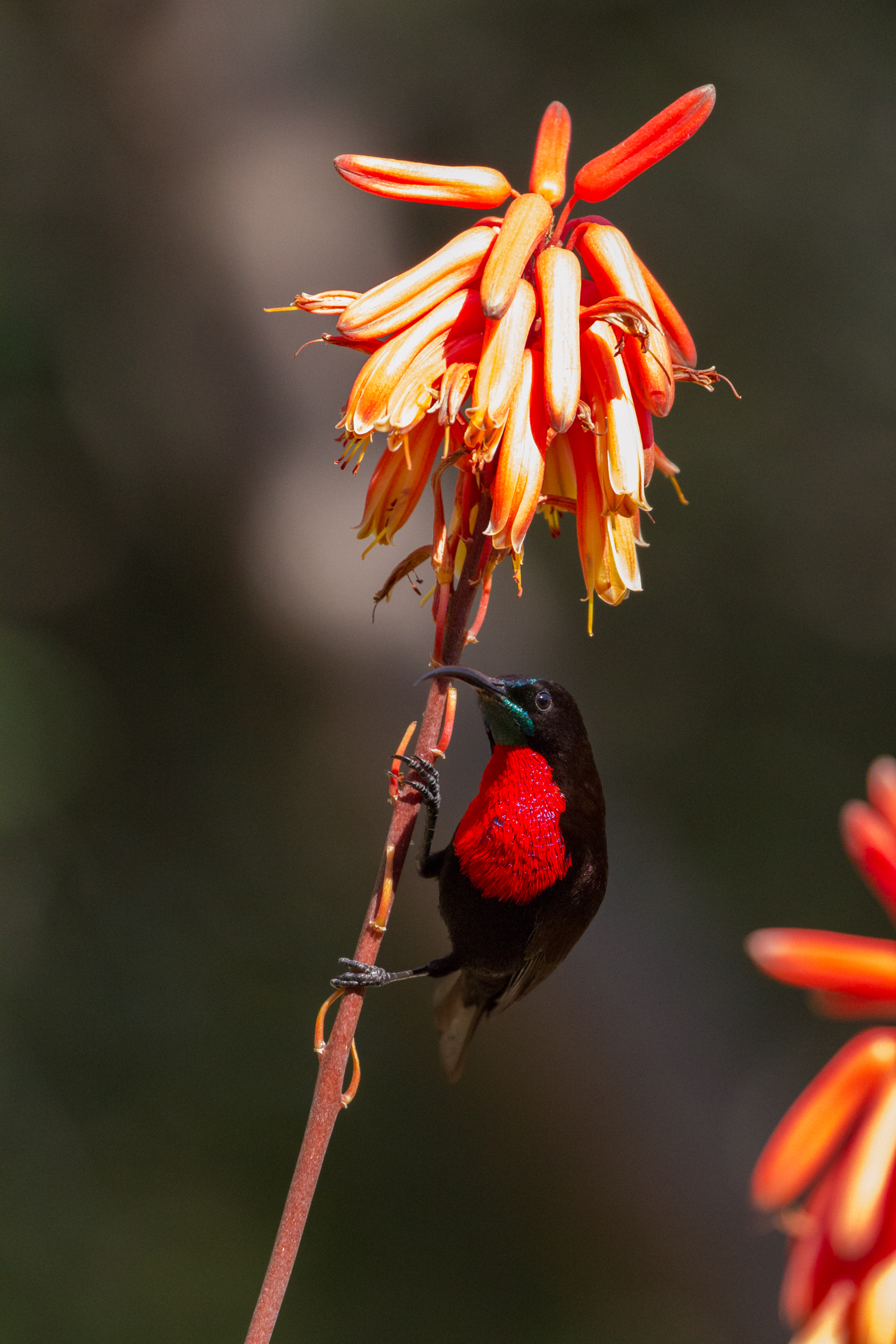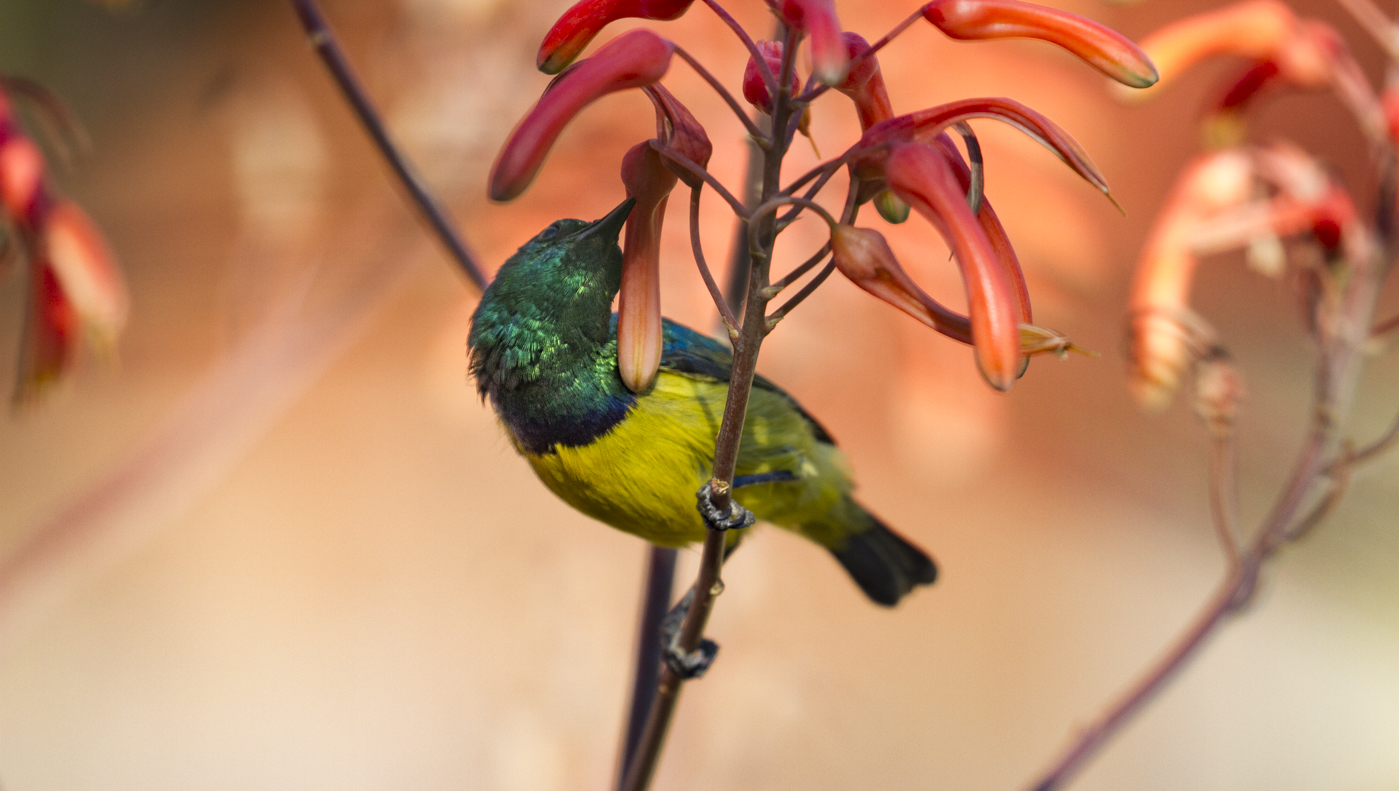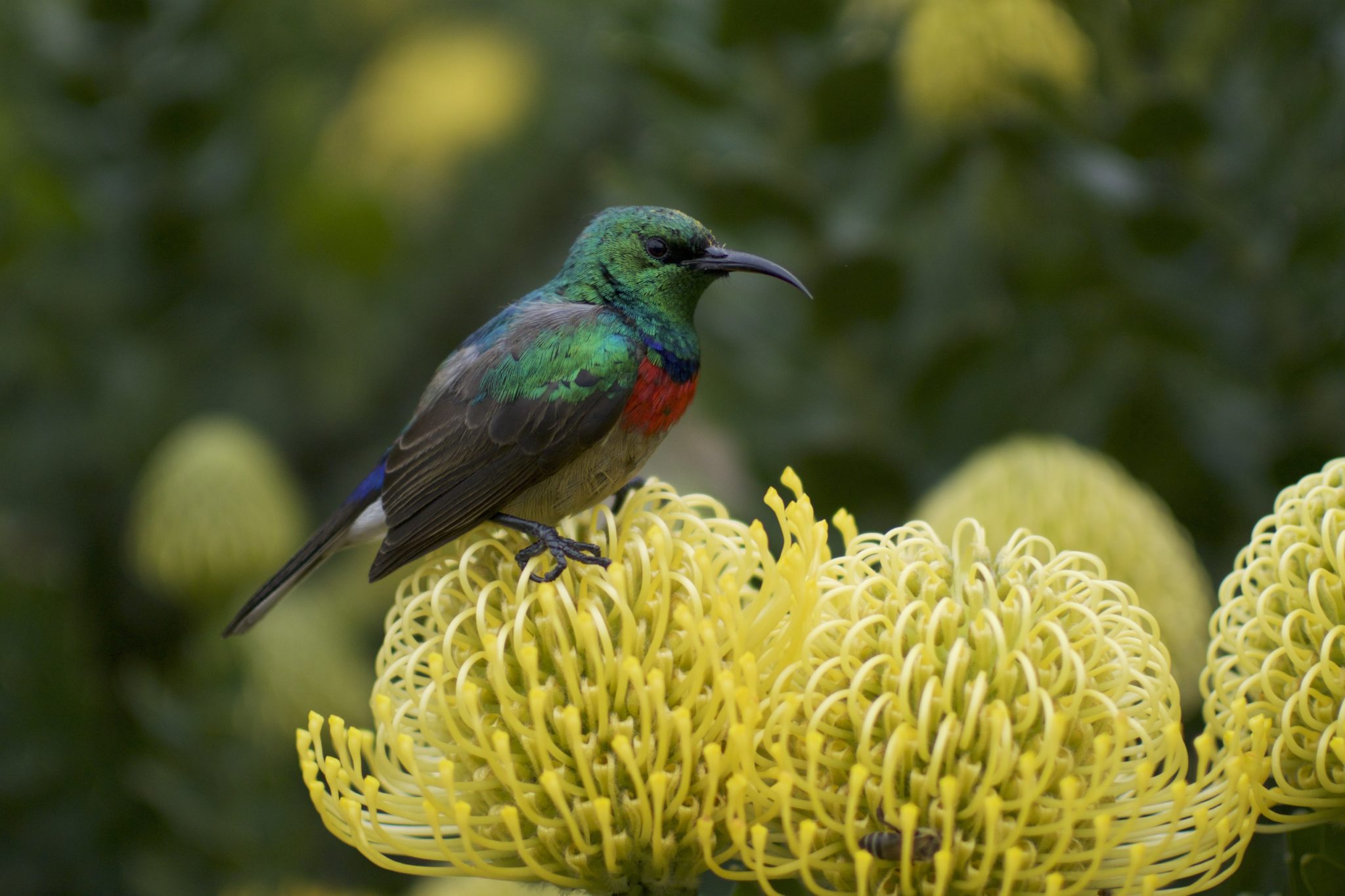
I’ve spent many a lunch break, afternoon and even a sneaky half an hour here and there during office hours sitting quietly trying to capture these striking birds in action while they flit from flower to flower feeding on the nectar that the aloes provide in otherwise very bare surroundings. Sun birds need to feed consistently throughout the day in order to harness enough energy, so staking out a patch of aloes in the dead of winter can often be an incredibly fruitful experience. They will often feed in mixed-species foraging flocks so there is usually a colourful variety of birds milling in one area. The aloes also perform a second function for the sun birds by attracting a variety of insects, which make up a substantial part of some species’ diets. The Collared Sunbird, a popular visitor this time of year, is probably the most insectivorous of the sun birds that I have seen here. It will eat a variety of insects, including pupae, as well as small spiders and even snails.
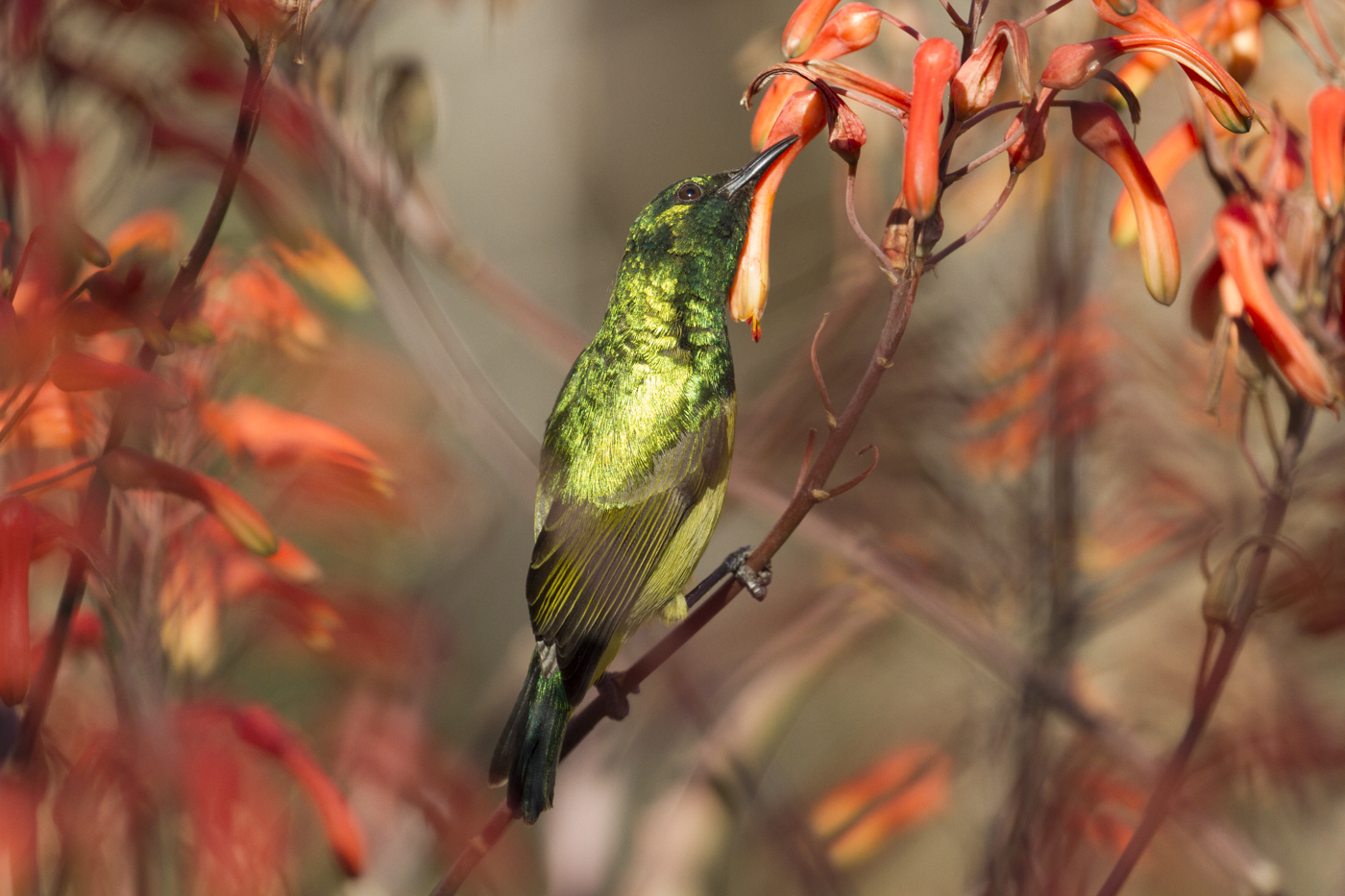
Aloes in all shapes and sizes can be found throughout the different camps, they provide a beautiful structure to the landscaping as well as food for birds and insects during winter. One of the many beautiful Aloe marlothii will not only bring colour in winter but hopefully attract even more bird life.
A colourful male Collared Sunbird perches on the stem of a Aloe chabaudii flower, in between feeding off the nectar of the flowers and the small insects that they attract. f/5.6, 1/1250s, ISO640, 400mm
Here you can clearly see the difference in the underparts of the female Collared Sunbird compared to her slightly more flamboyant male counterpart, in that she lacks the distinct bluish-purple breast band.
The female Scarlet-chested Sunbird isn’t as colourful as her male counterpart either but she has beautiful off-white and dark brown mottled underparts that make her easily identifiable. f/5.6, 1/8000s, ISO1600, 371mm
This female Collared Sunbird feeds on the nectar of the Aloe chabaudii flowers, a little more colourful than the female Scarlet-chested. f/5.6, 1/6400s, ISO1250, 400mm
A male White-bellied Sunbird eyes out the next Aloe arborescens flower that it is going to investigate for nectar; you can clearly see how much longer his bill is than that of the Collared Sunbird. f/5.6, 1/2500s, ISO4000, 400mm
The flowers of the Aloe marlothii attract a variety of small insects that not only feed off the aloes themselves, but provide another source of food for the Sunbirds. If you look carefully you can see one here.
A male Scarlet-chested perched on an aloe flower stem shortly after catching a small insect. They will also eat spiders by hovering and snatching them from their webs if given the chance. f/5.6, 1/5000s, ISO4000, 400mm
The velvety black body of the Scarlet-chested Sunbird really makes the glossy emerald green throat and bright scarlet breast that much more striking. Here you can clearly see the iridescent green throat on the male. f/5.6, 1/2500s, ISO4000, 400mm
Sticking its beak into the open end of the Aloe arborescens flower, the sunbird then extents its tongue further to reach the nectar. You will often see male Scarlet-chested sunbirds taking part in chasing both other Scarlet-chested sunbirds and those of a different species around at a nectar source, vocalising their perceived irritation at having to share. f/5.6, 1/800s, ISO400, 400mm
Here you can see the bill of this Collared Sunbird probing the still closed flower in search of nectar, it appears that he has pierced a hole near the base of the flowers in order to reach the nectar-rich area of the flower. This technique also provides an opening for the small insects that feed off the same flowers to access the food source before the flower has even opened.
The iridescent green throat and upper parts of the Collared Sunbird are clearly visible from this angle as he feeds from the Aloe chaubadii flower, sticking his bill through the base of the flower once again, despite the open end.

Rich Laburn is filmmaker, photographer and writer who is based at Londolozi Game Reserve in South Africa. Spending his time capturing scenes of the wild and communicating the beauty of the African bushveld, he runs the Londolozi Blog as a way to entertain and engage people wishing to visit these wild lands.

